King Ludwig II designed the castle as an isolated refuge. That's
what made it the perfect depot for hiding Nazi stolen art. George Clooney's
'The Monuments Men' sheds light on Neuschwanstein's role in World War II.
By Lori Herber
Splashed across postcards, travel guides and even Walt Disney products,
"the castle of the fairy-tale king" lures more than a million visitors
each year. Its instigator, King Ludwig II of Bavaria, was declared
insane and later drowned a mysterious death in 1886. Weeks later,
Neuschwanstein opened its doors to the public and remains a top tourist
attraction in Germany today.
But the fairy-tale fortress has its own Nazi past, illuminated most recently in George Clooney's World War II drama, "The Monuments Men."
The film follows an Allied special forces unit tasked with protecting
and tracking down Europe's stolen treasures during the Second World War.
King Ludwig II, left, broke
off his engagement to Duchess Sophie and lived in solitude most his life
Eccentric King Ludwig II didn't construct the whimsical
Neuschwanstein for royal purposes: He designed it as a hideaway from the
public. In a perverse twist of the king's intentions, this is precisely
what the Nazis did here with art plundered from their victims: hide it
from the public.
Hitler's
Orders
"Search lodges, libraries and archives of the occupied territories for
material valuable to Germany," Hitler ordered the Rosenberg taskforce -
his exclusive art-looting team - in a 1940 transcript
after German troops stormed neighboring France. Hitler's dream was to
build a "Führer's Museum" in Linz, Austria, with the plundered
treasures.
Between 1940 and 1945, Nazi officials funneled stolen valuables to
various locations throughout Germany including monasteries, salt mines
and castles.
"Neuschwanstein castle was chosen as headquarters of the 'Einsatzstab
Reichsleiter Rosenberg,' the German art-looting organization," said art historian Tanja Bernsau. Its location near the Austrian border, and far from Berlin or other likely Allied targets, made Neuschwanstein an ideal depot.
Although it was built to mirror a medieval structure, the architectural
gem featured the latest technology of its time: central heating,
flushing toilets and an electric bell system for summoning servants. The
cornerstone stone was laid in 1868, but the castle remained unfinished,
which meant ample space for storage.
Art Espionage
Most of the looted property stored in Neuschwanstein stemmed from
France, and it was the French connection that ultimately led the US army
to the castle.
Before his death in 2006, Monuments Man and art historian S. Lane Faison, Jr. described the discovery in an interview for the Archives of American Art. The key, he said, was French curator Rose Valland.
"She pretended to be a [Nazi] collaborator," Faison said of Rose Valland,
who worked at the Jeu de Paume Museum, one of the Nazis' central
collection points before they shipped stolen wares to Germany. For four
years, Valland secretly tracked where the art was being shipped.
The
van Eyck 'The Adoration of the Mystic Lamb' from 1432 was among the stolen
pieces at Neuschwanstein
Storming the Hideout
Rose Valland's reports led the Allies to the Bavarian castle.
When US troops descended upon Neuschwanstein in 1945, a vast collection
of index cards, lists and slides were discovered, detailing about
21,000 stolen items. Among them was the Gent altarpiece from the Van
Eyck brothers, the private jewelry and furniture collection of the
Rothschild family, and the gold and silver works of David-Weill.
A current exhibition at the Smithsonian Institute's Archives of American
Art highlights some of these World War II art rescue missions. "Monuments Men: On the Front Line to Save Europe's Art, 1942–1946," features black-and-white photographs of soldiers handling crates at a snow-covered Neuschwanstein.
"They would have preferred to leave the artworks in the castle to
organize the restitution to France from there," art historian Tanja
Bernsau said. "But as most of the contents in Neuschwanstein were stored
uncrated and were valuable gold and silver works, they decided to
relocate them for security reasons."
Rescue and Restitution
Thus, the crates were relocated to US-directed Central Art Collecting
Points, which were tasked with restitution, or tracking down the
treasures' original owners.
"And that's where the huge task started," said Iris Lauterbach of the
Central Institute for Art History in Munich. "The works of art had to be
inventoried, photographed and restituted one by one. American and
German art historians and secretaries worked together to restitute tens
of thousands of pieces."
S. Lane Faison returned to Germany in 1951 to supervise the handover of
US operations to the Germans and was struck by the enormity of the task.
"One of the saddest problems was that acres, I think you might say, of
furniture just went on and on and on, piled up to the ceiling…and
chairs, tables, household things, everything you could think of known to
have come from Jewish sources," Faison said. "But what do you do? And
if somebody lost six Louis XV chairs, which ones were they? And did we
have them? There was no way - you can't identify such things."
It
may not be historically accurate, but 'The Monuments Men' brings awareness to
the operation '
Battle Continues
Identification and art restitution work continues in Germany today. Recent discoveries of potentially stolen art continue
to hit the headlines, and "The Monuments Men" film, recently premiered
at the Berlin International Film Festival, also sheds light on those
responsible for preserving art in war. Nevertheless, Clooney's drama has its critics.
"I didn't like the film," Iris Lauterbach said. She appreciates the
awareness the drama brings, but she questions whether a layperson can
process the intricacies of the European war theater, the locations, the
art involved. "The film pretends to be based on a true story, but it
contains too many fictitious elements."
Neuschwanstein's role in Nazi Germany
is not mentioned in tours of the castle
Those looking for the details in a tour of Neuschwanstein
won't learn more either. Castle tours include includes King Lugwig II's
lavish bedroom, an artificial dripstone cave and the
modern-for-its-time kitchen. But there's no mention of the castle's role
in Germany's dark chapter.
"We're not trying to hide that fact," said castle spokesperson Thomas
Rainer.
Management wants to confront the castle's role in Nazi history,
he added. The director of the Bavarian Palace Museum department recently
wrote an essay on the topic of art rescue sites during World War II.
"But we have more than a million visitors per year and very strict
regular tours that last 30 minutes," Rainer said. "We focus on what we
can during that time."
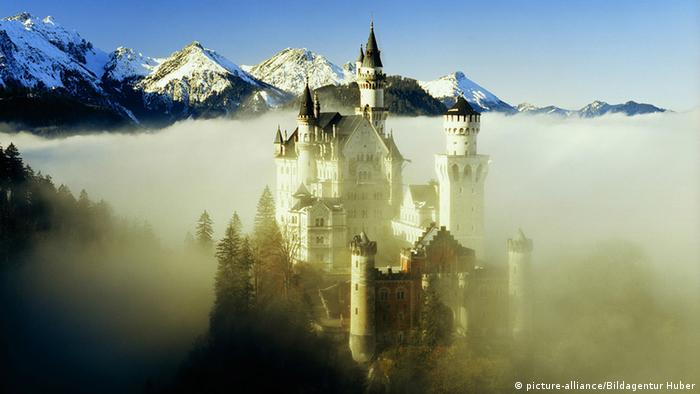
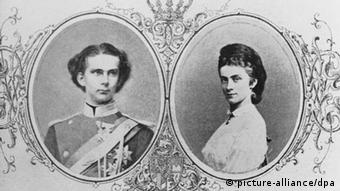
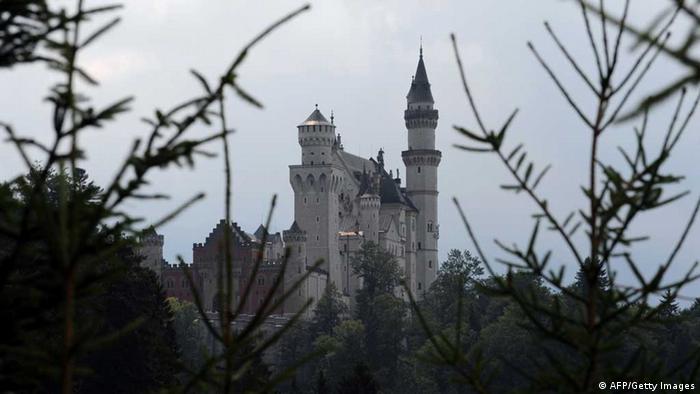
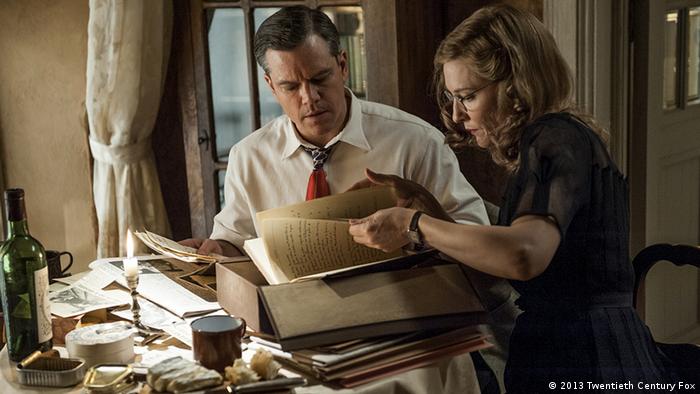
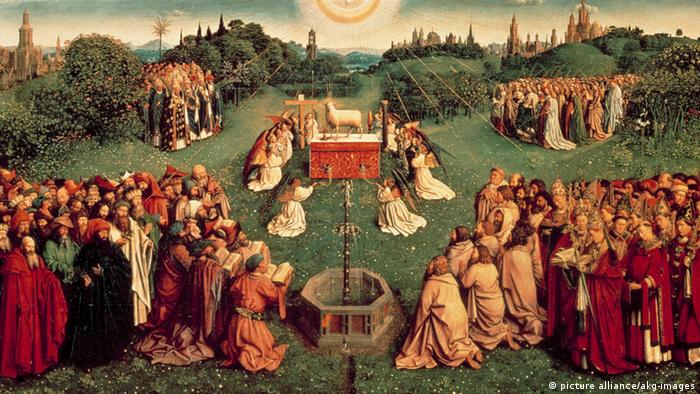
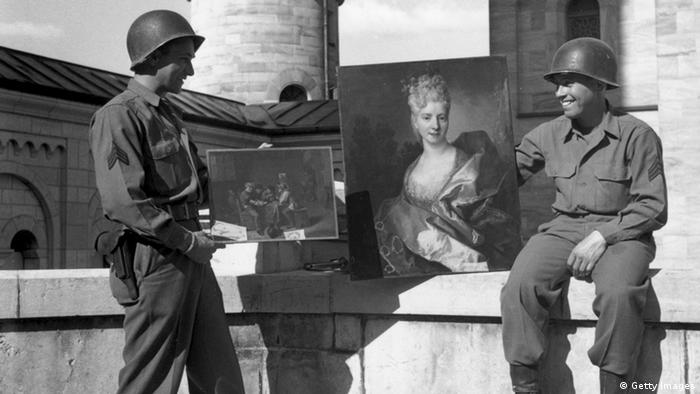
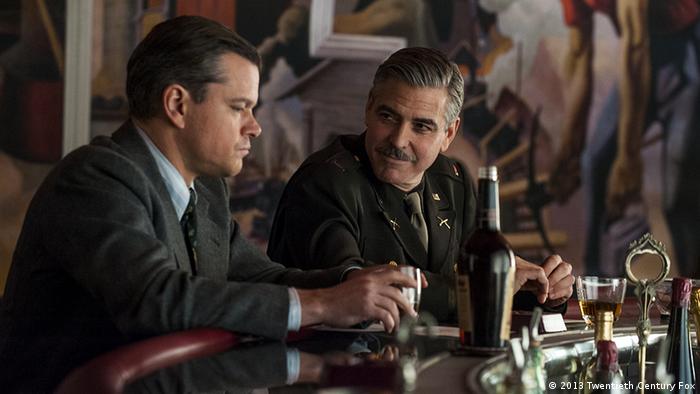
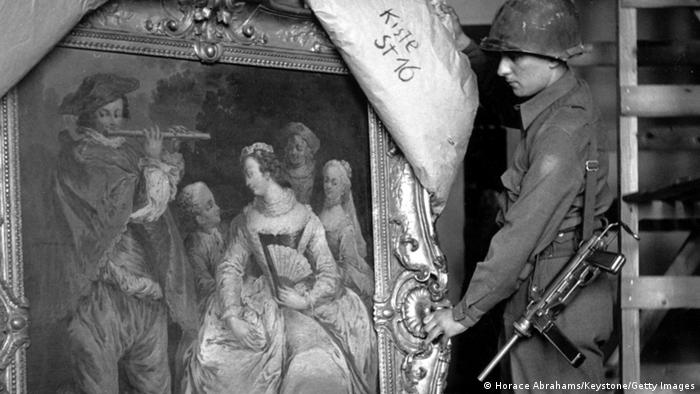
No comments:
Post a Comment